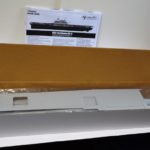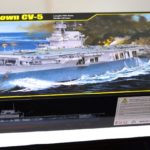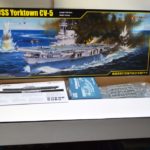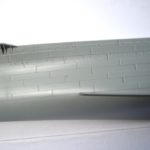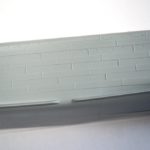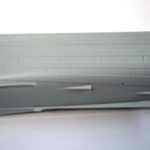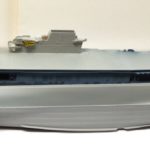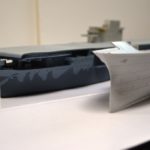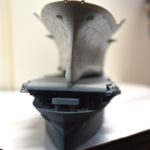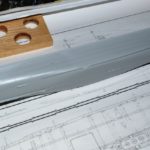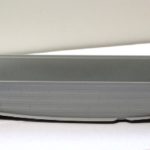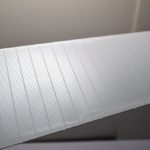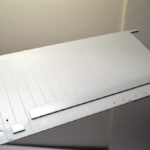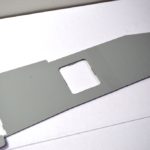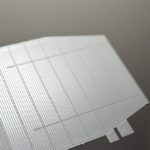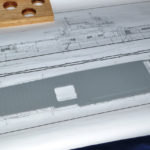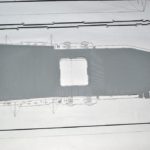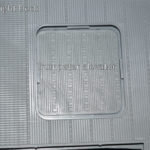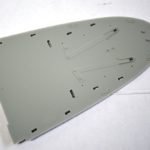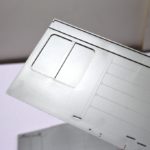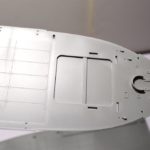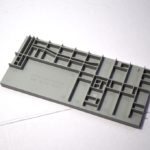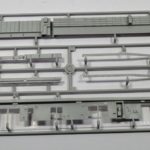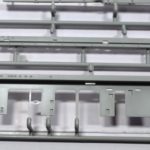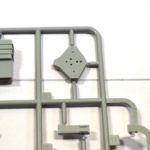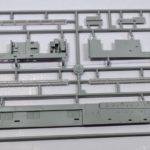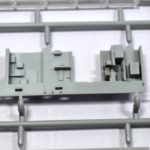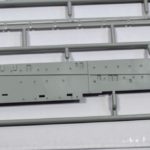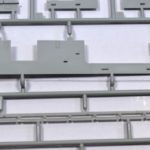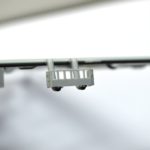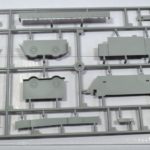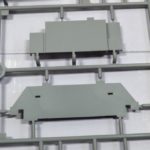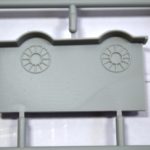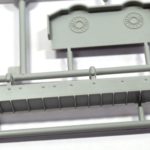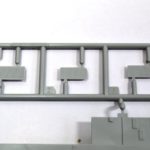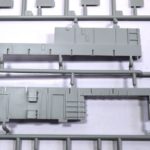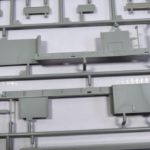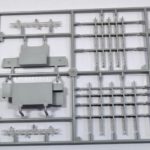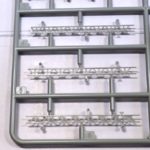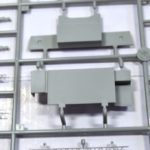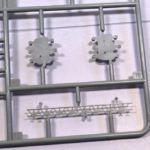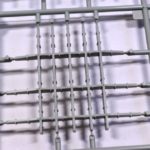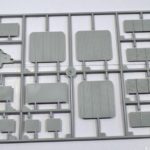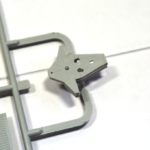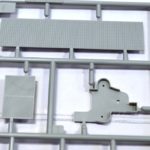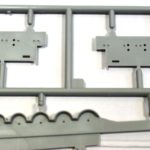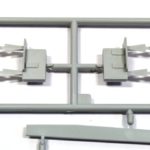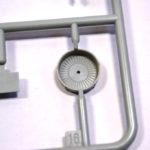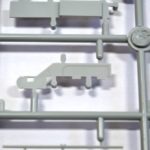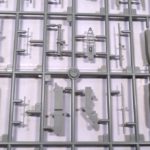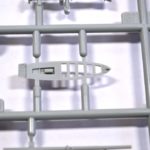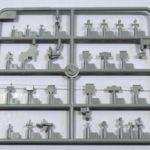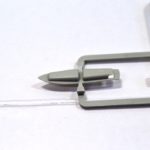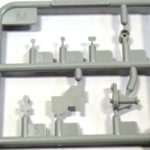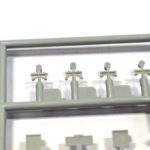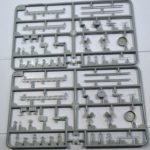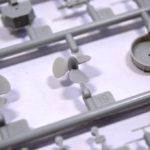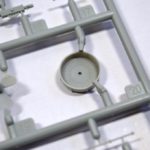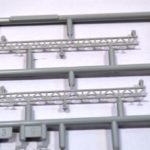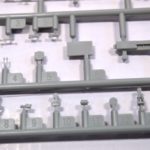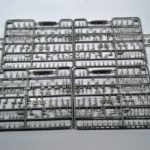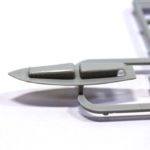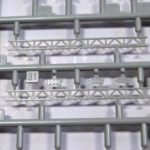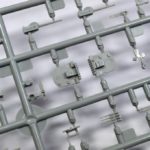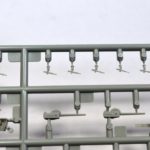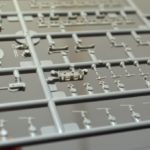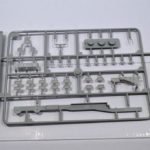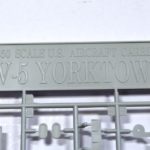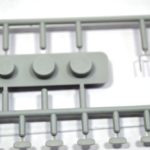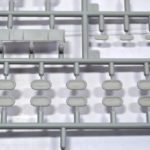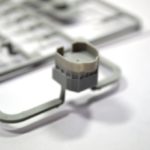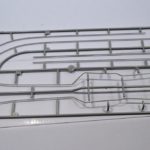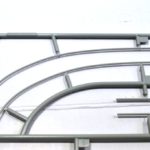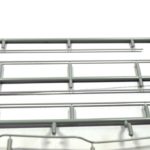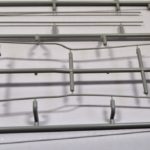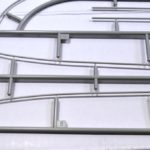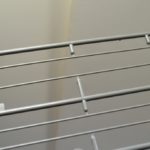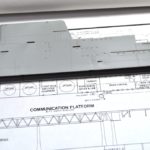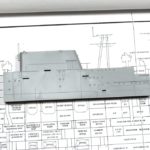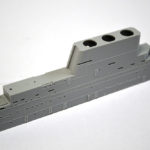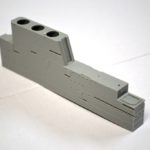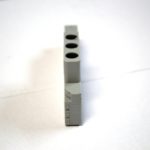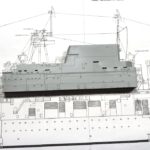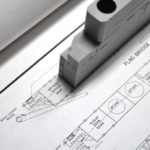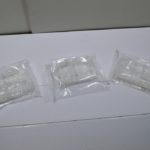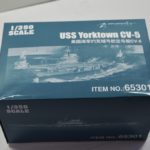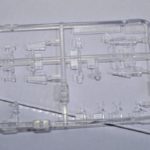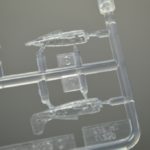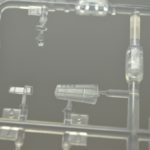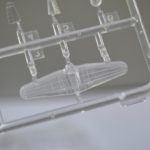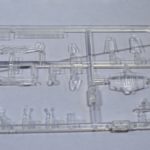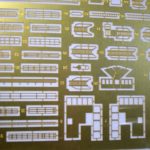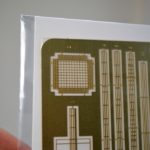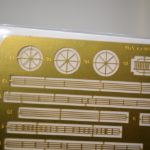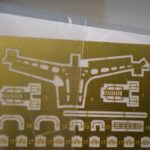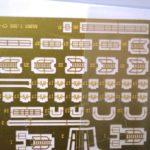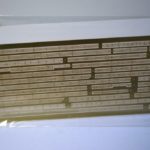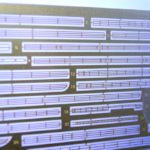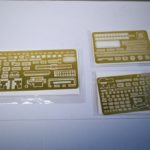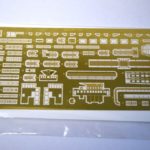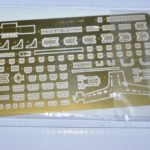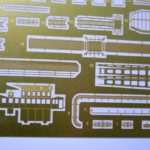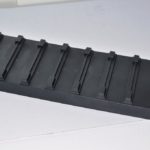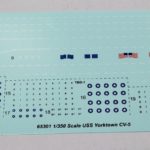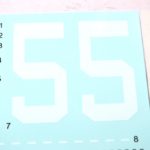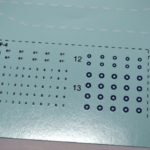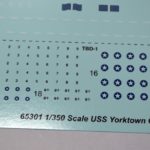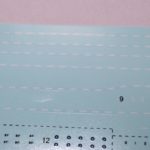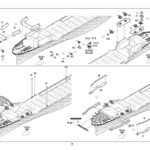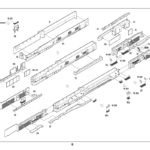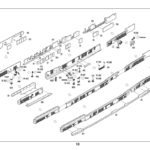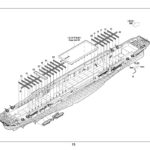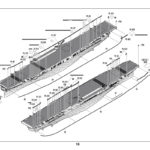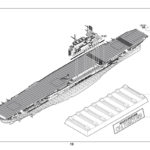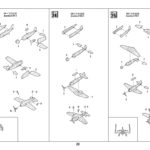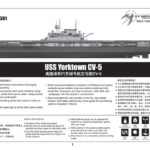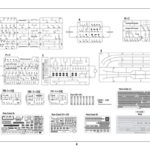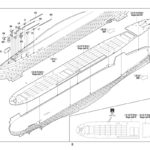History
In the annuals of the Pacific War, even the most casual observers and history buff knows the name Enterprise. Having survived the carnage intact, and been in almost all of the major carrier battles except Coral Sea, the “Big E” had a tremendous record of achievement. But in the dark days of 1942, when the inevitable victory seemed uncertain and very far away, there was another carrier who’s star shone even brighter than the Big E; a carrier with a highly motivated crew functioning at a high level of efficiency, who struck significant blows against the enemy. That carrier was the legendary USS Yorktown, CV-5, that “Gallant Ship”, who, along with the fabled “Lady Lex”, had stood toe to toe with the 5th Carrier Division of the vaunted Kido Butai at The Battle of the Coral Sea and blunted the planned Japanese advance on Port Moresby.
Battered at Coral Sea, Yorktown was said to need three months in a navy yard to be fit for active service again. Instead, the Navy Yard at Pearl Harbor had her patched up and ready for battle in three days, allowing her to sail into history at the pivotal Battle of Midway, where her planes would sink the Japanese carrier Soryu and share in the destruction of Hiryu, forever changing the course of the war. Unfortunately, the cost was high, and along with the many USN aircrews that were lost, so was Yorktown, after absorbing an incredible amount of punishment. For more on the history of USS Yorktown (CV-5), please check the ship’s history here.
The Merit USS Yorktown
In late 2002, Trumpeter Models released a highly anticipated scale model of the USS Hornet, CV-8, of Doolittle Raid Fame. Finally, an injection molded Yorktown-class carrier in 1/350 scale! However, for most ship modelers, the euphoria was to be short lived. Once the model was reviewed, the pronounced problems with the hull became apparent. While there have been some lovely builds of this kit, the issue with the hull form – even when built waterline – are quite obvious. To many ship-modelers dismay, it seems that there would never be a proper 1/350 Yorktown-class kit available in styrene. Fast forward almost 14 years, to the summer of 2014, when Merit International announced plans for a injection molded 1/350 Yorktown-class kit. To the surprise of many, they elected to release the class leader herself, instead of Enterprise. According to Merit, Yorktown was too important of the ship not to have a model done of her, hence their decision for her to be the subject of their first release.
So, was the wait worth it? In a word – yes.
Merit’s USS Yorktown comes in a large, sturdy box, with a very attractive painting of Old Yorky in action. Since the model is supposed to represent her at Midway, it would appear that the box art represents CV-5 during the Hiryu’s dive bomber attack. Upon removing the lid, you’ll find the typical large scale ship layout found these days, with the hull separated into one compartment, and the sprues in another. The hull is secured with small cardboard boxes that have custom fit opening for the bow and stern. All other parts – except the aircraft, which are in a smaller, separate box – are wrapped in plastic. The decals and extensive photo-etch sets are found at the bottom of the box, while the flight and hangar decks are in the section with the hull. Again, all of these are wrapped in plastic, with cardboard stiffeners inserted with the photo-etch.
The Hull
The hull is a 1000% improvement over the old resin Yorktown-class kits and over the Trumpeter Hornet, scaling out almost perfectly in length and width, and capturing the almost elegant curves of the real thing almost spot on. Those more knowledgeable than I said there is a slight discrepancy on the lower portion of the hull near the shafts as compared to ships plans (the model is too “fat” here), but it’s pretty imperceptible to the human eye. Comparing to the plans, the bilge keels look to be close to the right shape and size, with the forward set being perhaps a little too long. Unfortunately, all that beauty and perfection in the shape is marred by very overstated horizontal plates and vertical butt straps, which make up the shell plating of the ship.
A test shot of the hull made an appearance in Hampton, Virginia in August 2014 at the IPMS/USA National Convention, shortly after the kit was announced. The first thing most people picked up on was this dramatically overstated rendering of the plating on the side of the hull. On a real ship, the sides of the hull are not as smooth as the proverbial baby’s behind, but have sets of overlapping plates that create the hull form. These plates are noticeable in period photographs. With manufacturers looking to up their game and gain an edge on competitors, hull plating has started making an appearance over the last 5-10 years. Unfortunately, it’s not been something they’ve been entirely successful at, and the Merit Yorktown is no exception.
Back when the test shot made it’s appearance, and Merit was given the feedback to scale down or ditch the hull plating all together, they indicated that they would do so. Regrettably, it was apparently too late in the production process to do so. Which is a pity, because this feature really stands out, and not in a good way. Merit is planning follow up releases of Enterprise, and hopefully someday Hornet. I would hope that they would revise the mold and remove the plating for these future releases.
Deck Parts
There are five different parts making up the flight deck and hangar deck level – a two piece flight deck, a two piece hangar deck, and a smaller, separate piece for the fo’c’sle deck. One of the flaws in existing 1/350 carrier kits up until now (with the exception of Gallery’s Angled-Deck Intrepid) has been the unsightly seams in the two piece flight decks. The two pieces have been a necessary evil, enabling manufacturers to get more from their molds – they can reuse the larger aft section and mold a new, smaller forward section for different versions. As most fan of this class particular class know, the later Hornet had a different shape to her forward flight deck, hence the two pieces. Well, Merit has come up with an ingenious idea here, and broken the deck at the wind break in the deck. This leaves only two small seams to fill on either side of the flight deck.
Overall, the flight deck scales out close to the plans and has nice detail – it’s definitely an improvement over Trumpeter’s Hornet – and has both the forward and aft LSO platforms (the ships were designed to be able to steam backwards and recover aircraft over the bow) molded on. The tie downs, while probably over-scale, still look nice. Looking at plans, the planking is also most likely overscale, and there are less tie down strips than on the real thing, but these are minor quibbles, and most won’t notice anyway. A small negative is that the wind break on the kit appears to be slightly larger than the plans, but again – probably most won’t notice.
The hangar deck has the ubiquitous rectangular plates molded into the deck, but does have an sunken elevator pits also molded in, which is an interesting feature. The fo’c’sle deck has open hawse pipes and a finely molded chafing plate. There is also a large one piece “gallery deck” included in the kit, which is something I’ve not seen before. You really won’t be able to see much of it when the ships assembled, but it’s nice touch, being that the kit includes a full hangar interior.
Flight Deck
Hangar Deck
Sprue A
Included on this sprue are hangar bulkheads, the bow 20mm bandstand, the upper portion of the spotting top, and the front of the bridge on the island. Detail is good throughout, the hangar bulkheads have nice detail on the exterior sides. After looking at the bulkheads and the instructions, I realized that the kit comes with a full hangar interior, which is why some bulkheads have detail on both sides, and some bulkheads only on one side. This is a big improvement over every existing 1/350 injection molded carrier kit, including the new Gallery Intrepid.
Sprue B
On this sprue we have bulkheads, platforms and a bridge/island section with molded windows. Again, detail on the parts of the bulkheads that will be seen are good, and the bridge/island part windows are crisp and flash free. There are finely rendered roller doors in the closed position, piping, watertight doors and even molded on vertical ladders that look pretty good.
Sprue C
The five inch gun platforms, rudder, catwalks, trunking, platforms and bulkheads are found on this sprue, along with a raised 1.1 gun platform and clipping room. The 5 inch gun platforms have a raised ring for the mount to sit on. All the catwalks and platforms have raised detail on the undersides, representing bracing, while the top of the 1.1 clipping room has an engraved diamond tread pattern.
Sprue D
More hangar bulkheads, roller doors for these bulkheads, the support pillars for the aft end of the flight deck and platforms with diamond tread plating are on Sprue D. Overall, everything appears to be flash free and nicely molded. The tread plating on the platforms is nicely rendered, though the roller doors only have detail on one side, so if you decide to open only one side of your hangar deck, you’ll see the smooth backs, especially if you light the hangar.
Sprue E
There are some larger parts on this sprue, including more hangar bulkheads and the support structures for both the forward and aft flight deck overhangs. There are also trusses for the interior of the hangar deck and searchlight platforms for the island. The trusses for the interior of the hangar deck as especially nice – I personally think these types of things look better when done right in plastic than in photo-etch, as they are more 3D. The fore and aft flight deck support structure is light years ahead of what Trumpeter attempted with the Hornet, and much more realistic looking.
Sprue F
Large and small roller doors, flight deck elevators, the windbreak/palisades, aft island platform and lower portion of the spotting top are on this sprue. Again, the roller doors – both large and small – have detail only on one side. The elevators mirror my comments earlier about the flight deck, and you’ll find some molded on detail on the deck of the lower section of the spotting top, which will make it look “busy”, especially once the front and top are on. The lower side of the spotting top looks, at first glance, to be devoid of detail, but a glance at the instructions show the underside bracing is rendered with photo-etch.
Sprue G
More bulkheads, catwalks and a 1.1 inch gun tub are here. There is nice detail on the gun tubs – you’ll find a representation of the non-skid surface on the inside and bracing on the outside of the tub. The catwalks again feature “bracing” on their undersides. The catwalks featuring 20mm gun position have splinter shielding that, while probably a little over scale, still looks pretty good. There is also a nicely molded boat davit with well done hooks and pulley details on this sprue.
Sprue L
Prop struts, the flight deck crane post, more catwalks and platforms, boat cradle parts, masts, yards, antennas, outriggers, the masts/legs for the spotting top and some smaller parts – including a RD finder on the island and a jack and flagstaff are found on this sprue. The detail is really good – Merit has made the boat cradles multi-part assemblies that are open and look realistic – they aren’t the V shaped lumps of plastic that have previously represent boat cradles on other models. The yards and masts look good for plastic, but you may want to upgrade these to brass if you plan on rigging your CV-5. The part that really caught my eye is the small RD finder antenna that sits on the island. It’s really well molded! I did find a little bit of flash here for the first time, on the jackstaff.
Sprue M
Looking for more platforms deck detail on them? More boat cradles, some boat parts, hatches and signal lamps? Then you’ve come to the right sprue, because this is where they are found. Everything here looks good – the tops of the boats have portholes molded into the sides of the cabins. The small parts like the signal lamps look good too.
Sprue N (X2)
There are two identical N sprues, where you’ll find the props and shafts, 1.1 inch gun tubs, directors, the supports for three-level ladder structure at the aft end of the island, and the injection molded trusses for the hangar. The supports are very fine and have nice detail on them. I’m really impressed with the trusses for the hangar as these are molded quite thin, but have substance to them, so they’ll look better than photo-etch and probably be more forgiving as well. Detail on the 1.1 gun tubs is well done, with well rendered non-skid markings on the bottom of the gun tub’s interior.
Sprue P (X4)
There are four of sprue P in the box, which has the larger ships boats and cabins, more trusses and boat cradles, and lots and lots of weapons: 1.1 guns, 5 inch guns, .50 caliber guns and 20mm guns. There are also 40mm parts, which lines up with the circa-October 1942 Big E that Merit is rumored to be considering. Other parts include searchlights, paravanes and loudspeakers – yes, loudspeakers! – for the 1MC system. The .50 calibers are especially nice, the 20mm look good and are probably good enough with the shields included with the photo-etch set. The only nit here is that the 5 inch/38 caliber gun mounts may be the later version, and not the version the Yorktown-class carried.
Sprue Q
The name plate, funnel “tops”, more catwalks, rafts, frame for the CXAM and the bridge front are on this sprue. The funnel part is molded to represent the funnel uptakes, so you aren’t looking down into the empty funnel or at a solid plastic part (there are photo-etch funnel caps included in the kit). As with the earlier sprues, everything is really nicely molded.
Sprue R
The sprue is completely made up of the degaussing cable. It’s thin, but basically a section of long plastic rods. Yorktown’s degaussing cable – while being three dimensional – appeared to be flatter and wider with distinct straps holding it to the hull, as seen on the wreck. Personally, I would have rather seen the degaussing cable rendered in photo-etch.
Island
The island is one slide-molded part. It has nice detail – including the notch in the forward slope of the funnel – and matches up nicely with the plans. It’s too long by the thickness of the plastic, but the width is right on the money (and thinner than the Hornet island).
Aircraft
There are fifteen total aircraft included with Yorktown – five each of F4F-4, SBD-3 and TBD-1s. These appear to be the old Trumpeter aircraft, with the only difference being that they are molded entirely in clear plastic. Personally, I’m not a fan of clear plastic aircraft. There isn’t much to say about the aircraft, other than it’s a little disappointing that 10 year old molds were used, instead of including new aircraft.
F4F-4 Wildcats
SBD-3 Dauntless
TBD-1 Devastator
Photoetch
There are five photo-etch frets included with the kit. Fret A has railings which are pre-cut for specific locations on the model. Fret B contains the walkway around the funnel, the pri-fly structure on the side of the funnel, inclined ladders and more railings. Fret C (x2) has the large boat cranes on either side of the hull, 20mm gun shields, railings for the ships boats, and more inclined ladders. Fret D contains the CXAM radar, funnel caps, rails for around the tops of the funnels and the catwalk for under the forward part of the flight deck. All in all the photo-etch is well done, with some relief etching. It’s a very complete set, so those that wish can build CV-5 right out of the box, without having to wait for the aftermarket folks to release any upgrade sets.
Display Base Options
The standard display base is included.
Decals
One large sheet of decals is included. It includes deck stripes, A/C decals, small hull numbers and two very large, garish white number “5”‘s, for the flight deck. The USN didn’t use flight deck numbers at this time, and they certainly weren’t white during the war years. While the colors seem to be in register, the decals do appear to be a bit thick. I am sure some of the aftermarket folks will step up with, at a minimum, aircraft decals.
Instructions
A 20 page instruction manual is included. It’s in the familiar Trumpeter/Gallery style, but well laid out and pretty logical at first glance. There is a lot of stuff called out in some of the steps, so just take your time as you go along.
Conclusions
Ever since I read a book on Midway at the local library as a child, I’ve been hooked on the battle and on the gallant Yorktown. Yorktown is, arguably, my “favorite” ship. I’ve built many of the Revell kits, scooped up the Trumpeter Hornet when it came out in hopes of converting it to Yorktown, and even had the resin Blue Water Navy kit of Yorktown at one point. So, you can say that this is the kit I’ve been waiting for my whole life. Was it worth the wait? As I said earlier, in a word, yes.
Everything you need to build this kit is in the box, and should provide you hours of building pleasure. My only reservation – and it’s a big reservation – is the hull plating. It’s really an eyesore, and it’s a pity that Merit didn’t listen to the advice given to them and remove it all together. The only other beef I have with the kit is the inclusion of aircraft originally molded a decade ago. Otherwise, I found this to be a well molded, detailed kit of one of the unsung heroes of the Pacific War, a kit that is light years ahead of the Trumpeter Hornet. Strongly recommended!
Review sample courtesy of Merit International via Devin Poore. Review date 9 January, 2015.


